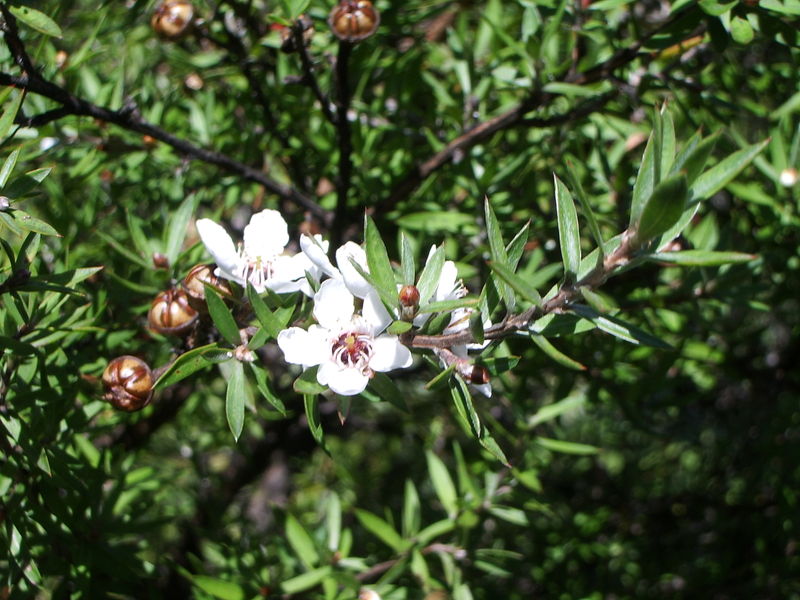- Leptospermum
Taxobox
name = "Leptospermum"

image_width = 240px
image_caption = "Leptospermum scoparium"
regnum =Plant ae
divisio = Magnoliophyta
classis = Magnoliopsida
ordo =Myrtales
familia =Myrtaceae
genus = "Leptospermum"
genus_authority = J.R.Forster & G.Forster
subdivision_ranks = Species
subdivision = About 80-86, including: "Leptospermum arachnoides" "Leptospermum epacridoideum" "Leptospermum grandiflorum" "Leptospermum javanicum" "Leptospermum juniperinum" "Leptospermum laevigatum " "Leptospermum lanigerum" "Leptospermum liversidgei " "Leptospermum minutifolium" "Leptospermum myrtifolium" "Leptospermum nitidum" "Leptospermum obovatum" "Leptospermum parviflorum" "Leptospermum petersonii " "Leptospermum polygalifolium" "Leptospermum recurvum " "Leptospermum roei" "Leptospermum rotundifolium" "Leptospermum rupestre" "Leptospermum scoparium " - Manuka "Leptospermum sphaerocarpum" "Leptospermum spinescens" "Leptospermum squarrosum" "Leptospermum trinervium""Leptospermum" is a genus of about 80-86 species of plants in the myrtle family
Myrtaceae . Most species are endemic toAustralia , with the greatest diversity in the south of the continent; but one species extends toNew Zealand , another toMalaysia , and "L. recurvum" is endemic to Malaysia.They are
shrub s or occasionally smalltree s, reaching 1-8 m tall, rarely up to 20 m, with dense branching. The leaves areevergreen , alternate, simple, sharp-tipped, and small, in most species not over 1 cm long. Theflower s are up to 3 cm diameter, with five white, pink or red petals.Uses
The common name of '
tea tree ' used for some species of "Leptospermum" derives from the practice of early Australian settlers of soaking the leaves of several species in boiling water to make aherbal tea rich inascorbic acid (Vitamin C ). It is said that Captain Cook brewed tea of Leptospermum leaves to prevent scurvy amongst his crews.The
nectar from the flowers is harvested bybee s; this is used to makeLeptospermum honey . Manuka honey has strongantibacterial andantifungal properties.In Australia, "Leptospermum" species are sometimes used as food plants by the
larva e of hepialidmoth s of the genus "Aenetus ", including "A. lewinii" and "A. ligniveren". These burrow horizontally into the trunk then vertically down.Most "Leptospermum" species make desirable
garden plants. The hardiest species ("L. lanigerum, L. liversidgei, L. polygalifolium, L. rupestre, L. scoparium") are hardy to about −8°C to −10°C; others are sensitive to frost. They tolerate most soils and exposures with good drainage and full sun. Established plants aredrought tolerant. They are often found as hedge plants on the west coast of theUnited States , and some species are popular for cultivation asbonsai . Manycultivar s exist.References
[http://plantnet.rbgsyd.nsw.gov.au/cgi-bin/NSWfl.pl?page=nswfl&lvl=gn&name=Leptospermum PlantNet reference]
Wikimedia Foundation. 2010.
